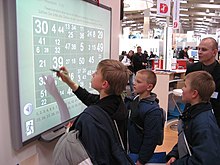Instructional scaffolding is the support given to a student by an instructor throughout the learning process. This support is specifically tailored to each student; this instructional approach allows students to experience student-centered learning, which tends to facilitate more efficient learning than teacher-centered learning. This learning process promotes a deeper level of learning than many other common teaching strategies.
Educational games are games explicitly designed with educational purposes, or which have incidental or secondary educational value. All types of games may be used in an educational environment, however educational games are games that are designed to help people learn about certain subjects, expand concepts, reinforce development, understand a historical event or culture, or assist them in learning a skill as they play. Game types include board, card, and video games.

In contemporary education, mathematics education—known in Europe as the didactics or pedagogy of mathematics—is the practice of teaching, learning, and carrying out scholarly research into the transfer of mathematical knowledge.
Situated learning is a theory that explains an individual's acquisition of professional skills and includes research on apprenticeship into how legitimate peripheral participation leads to membership in a community of practice. Situated learning "takes as its focus the relationship between learning and the social situation in which it occurs".

David Orlin Hestenes is a theoretical physicist and science educator. He is best known as chief architect of geometric algebra as a unified language for mathematics and physics, and as founder of Modelling Instruction, a research-based program to reform K–12 Science, Technology, Engineering, and Mathematics (STEM) education.
A cognitive tutor is a particular kind of intelligent tutoring system that utilizes a cognitive model to provide feedback to students as they are working through problems. This feedback will immediately inform students of the correctness, or incorrectness, of their actions in the tutor interface; however, cognitive tutors also have the ability to provide context-sensitive hints and instruction to guide students towards reasonable next steps.
Principles and Standards for School Mathematics (PSSM) are guidelines produced by the National Council of Teachers of Mathematics (NCTM) in 2000, setting forth recommendations for mathematics educators. They form a national vision for preschool through twelfth grade mathematics education in the US and Canada. It is the primary model for standards-based mathematics.
Founded in 1920, The National Council of Teachers of Mathematics (NCTM) is a professional organization for schoolteachers of mathematics in the United States. One of its goals is to improve the standards of mathematics in education. NCTM holds annual national and regional conferences for teachers and publishes five journals.
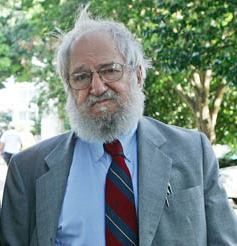
Constructionist learning is the creation by learners of mental models to understand the world around them. Constructionism advocates student-centered, discovery learning where students use what they already know to acquire more knowledge. Students learn through participation in project-based learning where they make connections between different ideas and areas of knowledge facilitated by the teacher through coaching rather than using lectures or step-by-step guidance. Further, constructionism holds that learning can happen most effectively when people are active in making tangible objects in the real world. In this sense, constructionism is connected with experiential learning and builds on Jean Piaget's epistemological theory of constructivism.
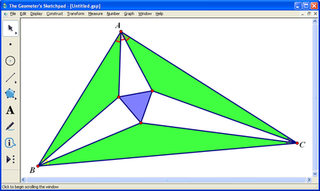
The Geometer's Sketchpad is a commercial interactive geometry software program for exploring Euclidean geometry, algebra, calculus, and other areas of mathematics. It was created as part of the NSF-funded Visual Geometry Project led by Eugene Klotz and Doris Schattschneider from 1986 to 1991 at Swarthmore College. Nicholas Jackiw, a student at the time, was the original designer and programmer of the software, and inventor of its trademarked "Dynamic Geometry" approach; he later moved to Key Curriculum Press, KCP Technologies, and McGraw-Hill Education to continue ongoing design and implementation of the software over multiple major releases and hardware platforms. Present versions run Microsoft Windows and MacOS Ventura. It also runs on Linux under Wine with a few bugs. There was also a version developed for the TI-89 and TI-92 series of Calculators. In June 2019, McGraw-Hill announced that it would no longer sell new licenses. Nonetheless, a license-free 64-bit version of Mac Sketchpad that is compatible with the latest Apple silicon chips is available. A license-free Windows version of the software is also available. The Sketchpad Repository contains over 200 videos, with Sketchpad and Web Sketchpad tutorials as well as an archive of Sketchpad webinars that were offered by Key Curriculum Press.
An intelligent tutoring system (ITS) is a computer system that imitates human tutors and aims to provide immediate and customized instruction or feedback to learners, usually without requiring intervention from a human teacher. ITSs have the common goal of enabling learning in a meaningful and effective manner by using a variety of computing technologies. There are many examples of ITSs being used in both formal education and professional settings in which they have demonstrated their capabilities and limitations. There is a close relationship between intelligent tutoring, cognitive learning theories and design; and there is ongoing research to improve the effectiveness of ITS. An ITS typically aims to replicate the demonstrated benefits of one-to-one, personalized tutoring, in contexts where students would otherwise have access to one-to-many instruction from a single teacher, or no teacher at all. ITSs are often designed with the goal of providing access to high quality education to each and every student.

Discovery learning is a technique of inquiry-based learning and is considered a constructivist based approach to education. It is also referred to as problem-based learning, experiential learning and 21st century learning. It is supported by the work of learning theorists and psychologists Jean Piaget, Jerome Bruner, and Seymour Papert.
Traditional mathematics was the predominant method of mathematics education in the United States in the early-to-mid 20th century. This contrasts with non-traditional approaches to math education. Traditional mathematics education has been challenged by several reform movements over the last several decades, notably new math, a now largely abandoned and discredited set of alternative methods, and most recently reform or standards-based mathematics based on NCTM standards, which is federally supported and has been widely adopted, but subject to ongoing criticism.
Mathematical anxiety, also known as math phobia, is a feeling of tension and anxiety that interferes with the manipulation of numbers and the solving of mathematical problems in daily life and academic situations.
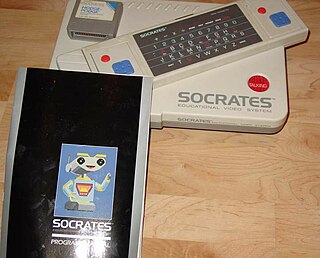
An educational video game is a video game that provides learning or training value to the player. Edutainment describes an intentional merger of video games and educational software into a single product. In the narrower sense used here, the term describes educational software which is primarily about entertainment, but tends to educate as well and sells itself partly under the educational umbrella. Normally software of this kind is not structured towards school curricula and does not involve educational advisors.
In mathematics education, a representation is a way of encoding an idea or a relationship, and can be both internal and external. Thus multiple representations are ways to symbolize, to describe and to refer to the same mathematical entity. They are used to understand, to develop, and to communicate different mathematical features of the same object or operation, as well as connections between different properties. Multiple representations include graphs and diagrams, tables and grids, formulas, symbols, words, gestures, software code, videos, concrete models, physical and virtual manipulatives, pictures, and sounds. Representations are thinking tools for doing mathematics.

DreamBox Learning is an American online software provider that focuses on mathematics education and reading education at the elementary, middle school, and for reading, the high school level. The mathematics software provides pre-kindergarten through 8th-grade students with over 2,000 lessons presented as animated adventures, games, and challenges, while the reading software provides students in elementary to high school levels with articles to boost their reading skills.
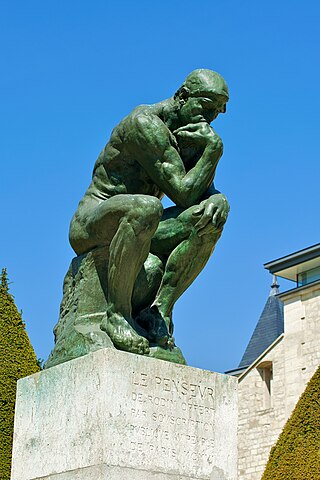
Embodied design grows from the idea of embodied cognition: that the actions of the body can play a role in the development of thought and ideas. Embodied design brings mathematics to life; studying the effects of the body on the mind, researchers learn how to design objects and activities for learning. Embodiment is an aspect of pattern recognition in all fields of human endeavor.

Math Blaster! is a 1983 educational video game, and the first entry in the "Math Blaster" series within the Blaster Learning System created by Davidson & Associates. The game was developed by former educator Jan Davidson. It would be revised and ported to newer hardware and operating systems, with enhanced versions rebranded as Math Blaster Plus! (1987), followed by New Math Blaster Plus! (1990). A full redesign was done in 1993 as Math Blaster Episode I: In Search of Spot and again in 1996 as Mega Math Blaster.

Gary Bitter is an American researcher, teacher, and author focusing on educational technology. He is Professor of Educational Technology and past Executive Director of Technology Based Learning and Research at Arizona State University. He was a founding board member of the International Society for Technology in Education and served as its first elected president. He is the co-author of the National Technology Standards (NETS) which have been used extensively as a model for National and International Technology Standards.
